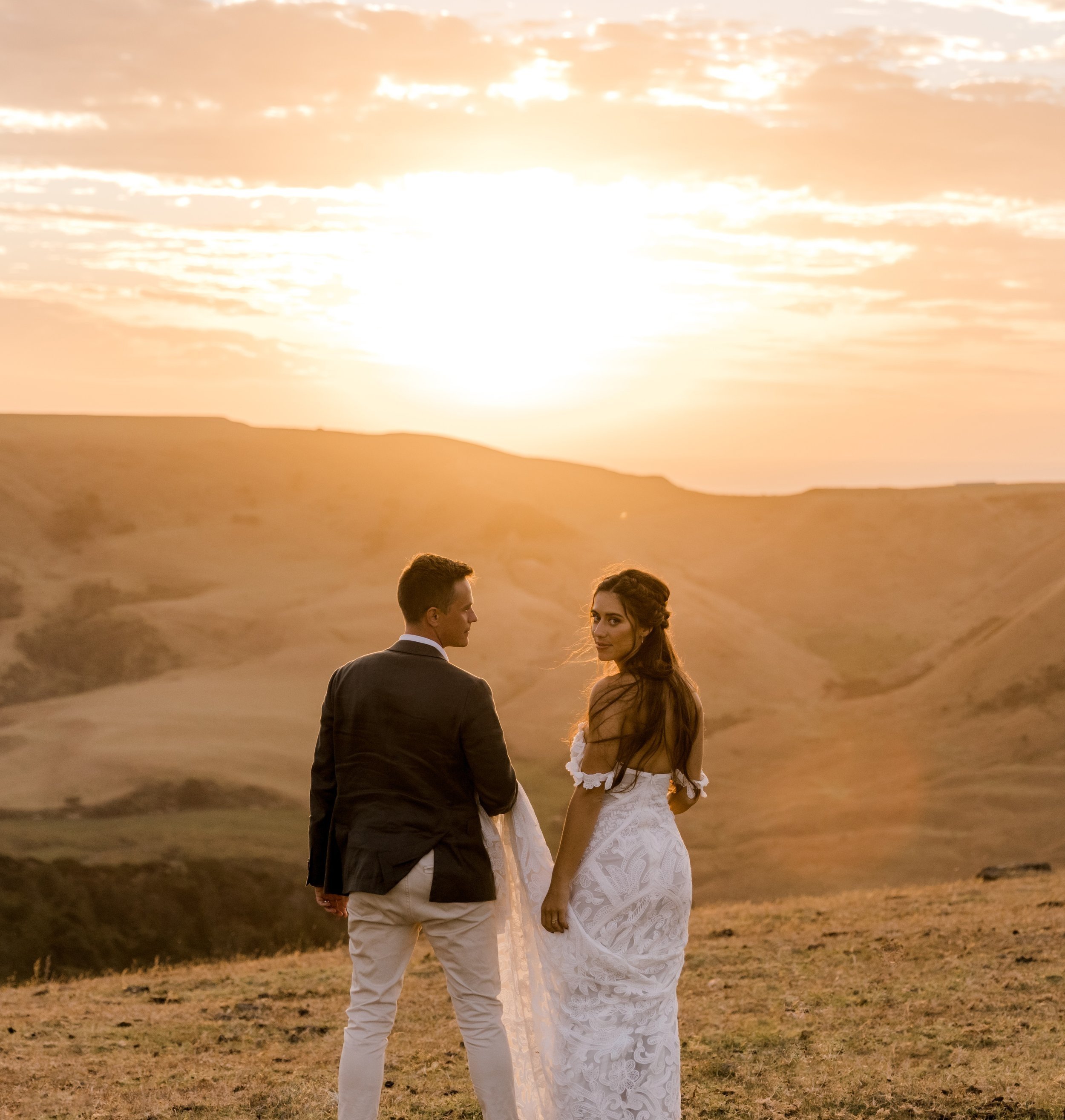Picture Perfect Wedding Photography
By Rebecca Williamson
From the signing of the register to the cutting of the cake, capturing those special moments on camera allows you to treasure them forever. Choosing the right photographer to fit your personality and the style of your nuptials is paramount, as is planning your day to get the most out of your photography package. Here’s a guide to getting beautiful pictures to treasure for years to come.
Photo by Emmaline Photography
Selecting a professional
Begin by making a shortlist of photographers in your wedding region and compare their skills, qualifications and online reviews. Browse their wedding portfolios to ensure their style and quality is what you envision for your big day. Bear in mind that an experienced, award-winning photographer will naturally be more expensive than a photography student.
Once you have whittled down your list to two or three, book an appointment to meet them and ask a few questions, including:
What equipment do you use?
What packages are available? And what exactly is included?
Do you have a back-up in the event you are unable to work on the day?
When will I receive my photos?
Who will own the copyright?
Consider whether their personality fits yours, and don’t be afraid to ask around for references – your other suppliers may even be able to provide recommendations. Good photographers can be snapped up well in advance so, once you have made your decision, book and pay the deposit as soon as possible to secure your wedding date.
Choosing a package
Most wedding photographers offer a selection of packages and prices, ranging from $500 for a few ceremony shots to upwards of $5000 for complete documentation of the day, from getting ready right through to the first dance. It’s vital to find out exactly what each package includes. Some questions to ask are:
How many edited photos will I receive?
In what format will I receive them?
Are any extras – such as prints, a USB or an album – included?
How many hours of work does each package include and what is the charge if more hours are required on the day?
How many photographers/assistants will be there?
Do we need to provide meals?
Will you be posting our wedding photos on social media or your website?
Do you offer an online gallery so guests can view our photos?
Planning perfect pictures
Deciding on the style of photos you want is the fun part. Find inspiration by flicking through magazines and researching online, then create a scrapbook or mood board to show your photographer. For example, you may adore the ‘dreamy’ soft-focus look, artistic images, classic and formal portraits, or documentary-style photos. Also think about whether you would like bright, enhanced colours or black and white, and any particular bridal party poses or props.
As for your photo locations, investigate where the appropriate areas are at your ceremony and reception venues – you may like to meet your photographer there in advance so they can scout out the best options.
Many couples have family photos taken after the ceremony then travel to another location for bridal party shots. If you are planning to go off-site, remember to factor in the time it will take to get there, or consider having these photos done before walking down the aisle. If your photos are to be taken outdoors, you’ll need to have a back-up plan in case of wet weather – again, your photographer should be able to advise the best locations.
Preparing for the day
Writing a brief and schedule will assist your photographer in capturing those magical moments. An example of a brief could be, ‘Our wedding will be modern and relaxed. We love bright, bold colours and we hope to convey our sense of fun in our photos, so nothing too posed or formal. It’s really important to us that we get candid shots of our guests enjoying the day, as well as some fun photos of our bridal party. We also want the natural scenery to feature strongly in the background.’ Don’t forget to include examples from your scrapbook or mood board.
In addition to this, it’s a good idea to devise a ‘wish list’. There may be some photos that you would love to have in your album – such as a detail shot of your grandmother’s brooch in your bouquet or your niece gifting you a horseshoe – but your photographer won’t know that these are a priority unless you communicate this. Try to keep your wish list short and sweet, however – you don’t want to miss out on those wonderful in-the-moment shots because your photographer is focussed on ticking everything off.
You’ll also need to create a family photo list that details how many shots you want and of whom. Allow at least half an hour for your group shots – it’s often the most stressful part of a wedding for a photographer as gathering the required guests can be challenging. Ensure you elect one person on each side of the family to be in charge of rounding people up (hint: if you want a group photo of all your wedding guests, take this straight after the ceremony before anyone wanders off).
Finally, distribute a copy of your schedule to your photographer a few weeks before the big day so they can advise you on the time required for various shots. For example:
1pm – getting-ready shots with the bride
2pm – getting-ready shots with the groom
3pm – pre-ceremony shots of the venue and guests
3.30pm – ceremony
4pm – family photos
4.30pm – bridal party off-site shots
6pm – reception begins (followed by 8pm cutting of the cake and 9pm first dance).
Photo by Emmaline Photography
Get Bride &Groom magazine for more wedding advice, ideas and inspiration www.brideandgroom.co.nz/shop



